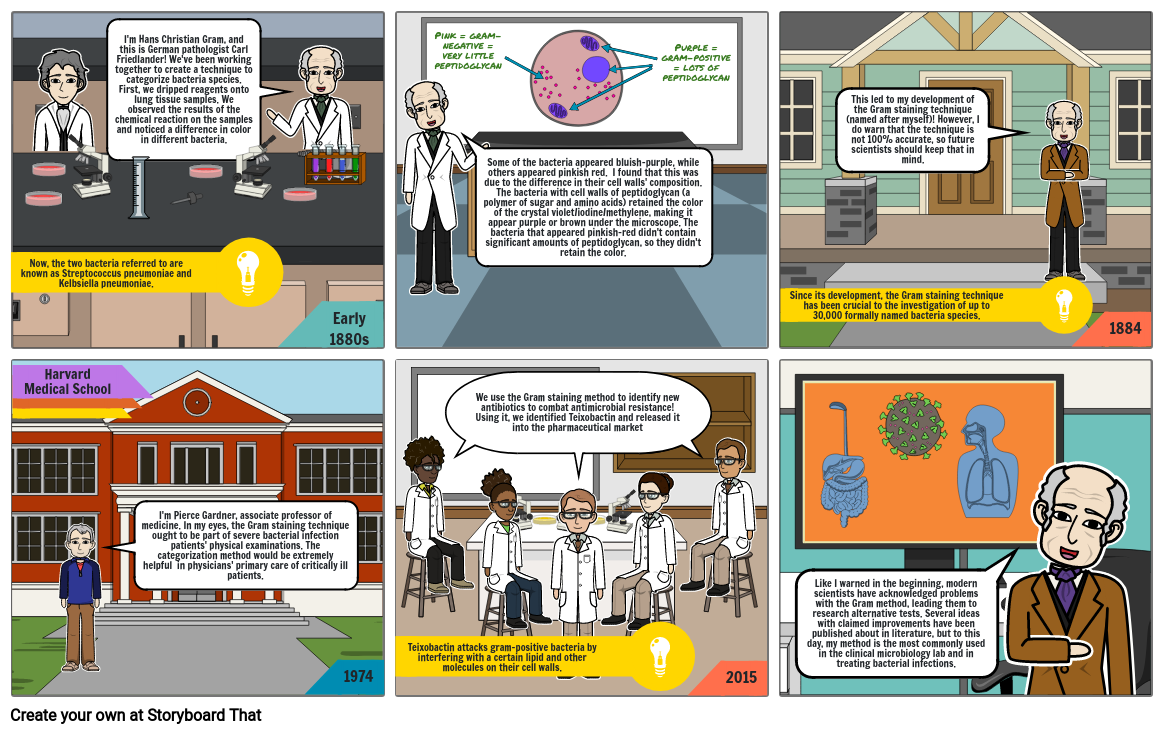Hans Christian Gram

Storyboard Tekst
- Now, the two bacteria referred to are known as Streptococcus pneumoniae and Kelbsiella pneumoniae.
- I'm Hans Christian Gram, and this is German pathologist Carl Friedlander! We've been working together to create a technique to categorize bacteria species. First, we dripped reagents onto lung tissue samples. We observed the results of the chemical reaction on the samples and noticed a difference in color in different bacteria.
- Early 1880s
- Pink = gram-negative = very little peptidoglycan
- Some of the bacteria appeared bluish-purple, while others appeared pinkish red. I found that this was due to the difference in their cell walls' composition. The bacteria with cell walls of peptidoglycan (a polymer of sugar and amino acids) retained the color of the crystal violet/iodine/methylene, making it appear purple or brown under the microscope. The bacteria that appeared pinkish-red didn't contain significant amounts of peptidoglycan, so they didn't retain the color.
- Purple = gram-positive = lots of peptidoglycan
- Since its development, the Gram staining technique has been crucial to the investigation of up to 30,000 formally named bacteria species.
- This led to my development of the Gram staining technique (named after myself)! However, I do warn that the technique is not 100% accurate, so future scientists should keep that in mind.
- 1884
- Harvard Medical School
- I'm Pierce Gardner, associate professor of medicine. In my eyes, the Gram staining technique ought to be part of severe bacterial infection patients' physical examinations. The categorization method would be extremely helpful in physicians' primary care of critically ill patients.
- 1974
- Teixobactin attacks gram-positive bacteria by interfering with a certain lipid and other molecules on their cell walls.
- We use the Gram staining method to identify new antibiotics to combat antimicrobial resistance! Using it, we identified Teixobactin and released it into the pharmaceutical market
- 2015
- Like I warned in the beginning, modern scientists have acknowledged problems with the Gram method, leading them to research alternative tests. Several ideas with claimed improvements have been published about in literature, but to this day, my method is the most commonly used in the clinical microbiology lab and in treating bacterial infections.
Meer dan 30 miljoen storyboards gemaakt

